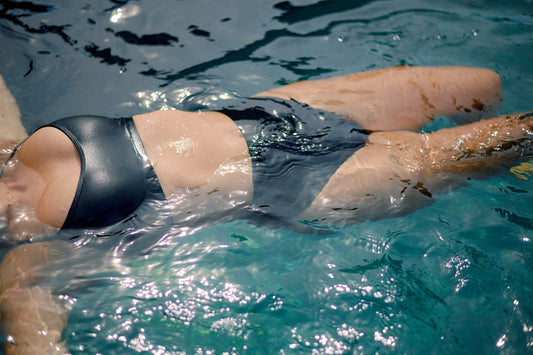
Period Poverty: A Day in the Life of a Student
Aisle TeamWhat does period poverty actually look like? In order to describe it, we thought about all of the stories that have been shared with our team over the past decades, and came up with a composite profile of a post-secondary student we are calling Sloan (she/they). Before we get into a day in their life, let’s review the basics about period poverty and sustainable menstrual equity.
What is Period Poverty?
Defined as a lack of access to menstrual products, education and a taboo-free social attitude towards menstruation, according to PLAN International, period poverty affects over 25% of Canadians who menstruate. US research shows that over 64% of students struggle to access products. These percentages increase among youth under age 25, people with disabilities, Indigenous, trans and gender non-conforming, and other marginalised individuals.
What Are the Impacts?
The impacts of period poverty are widespread, and can include missed classes, meetings, work shifts and reduced ability to participate in everyday activities comfortably and confidently. Such conditions can even necessitate heartbreaking choices between buying food or menstrual supplies.
Should Period Products Be Free?
At Aisle, we believe that period products should be free, universally accessible, of high quality, available in a variety of absorbencies, and as sustainable as possible to those who need them. We are huge fans of the Scottish Government’s Period Products (Free Provision) (Scotland) Act 2021: Equality Impact Assessment, a wonderfully well thought-out program for supporting comprehensive menstrual equity. The purpose of the Act is to “[E]nsure[s] that everyone in Scotland who menstruates can have reasonably convenient access to period products, free of charge, as and when they are required.” We are hopeful that the U.S.A. is not far behind with its proposed Menstrual Equity for All Act.
Sloan’s Story
To illustrate the reality for up to 25% of students, let’s imagine a day in the life of Sloan (she/they), a university student who is unable to afford or otherwise easily access menstrual products.
Sloan’s period arrives first thing in the morning while they are at home. Not being able to buy products, they make do with one of the following classic solutions: a sock, an expired product they found underneath a bathroom sink, something from a friend or roommate, a wad of toilet paper, or wearing multiple layers of underwear until they are able to locate another product. Note that none of these solutions offer something comfortable, effective or even necessarily safe, let alone adequate for their flow or personal preference.
Or perhaps they choose to stay home; rather than risk discomfort or visibly wearing menses-soaked garments, they miss class, exams, sports and other activities.
Assuming that Sloan finds a temporary solution and heads to campus, they are then presented with the struggle of finding another product. Feeling under pressure to get to class with little assurance of being able to find something adequate in time is highly stressful. This fear and anxiety is a distressing example of how period poverty affects mental health.
The idea that bathroom provision is an adequate solution is not borne out by research, which found that 3 in 5 students say they rarely or never find free period products in school bathrooms (59%) or public bathrooms (62%). If we take these findings as normative, what happens if Sloan is unable to find a product? Likely discomfort, embarrassment, and having to skip activities to return home. And let’s remember that ‘going home’ does not presume product access – just more of the stop-gap solutions that they had earlier in the day.
Even if every public bathroom were stocked with free menstrual products, additional solutions would need to be implemented in order to provide students with products outside of these ‘emergency’ public stashes. Note that Sloan’s period arrived when they were home, which is where most students spend roughly half their days.
We Can Do Better: Reusable Period Products
Let’s consider a different scenario. Sloan wakes up and realises that their period has started. Since their first day is typically heavy flow, they consider whether to use a menstrual cup or period underwear, opting for the cup with a cloth liner for backup. Period handled, they head off to campus with a couple extra cloth liners stashed in their backpack should they need them later in the day.
Even though they know that they can safely wear their cup for up to 12 hours, Sloan changes their cup midway through the day for added peace of mind, and swaps in a fresh liner. Walking through the Student Union Building, they see student government volunteers handing out free reusable period products again, and are grateful to have received their own supplies this way. No more sprints across campus in search of products between classes.
That evening, they remove their cup, put on a pair of their favourite Boxer Brief period underwear, and head to bed for a sound, worry-free sleep.
How Can I Help?
Sloan’s story is more common than many people realise, and their fictional profile represents an aggregate of literally hundreds of stories and pieces of research we here at Aisle have reviewed. The good news is that help for those quietly suffering period poverty can just be a few conversations away:
- Ask employers, student unions and administrators to provide reusable products. Reach out to partnerships@periodaisle.com for products, support + more information.
- Educate others about the importance of reusable solutions using our free Planet-Positive Periods Toolkit which includes a full public presentation, facilitator guide, additional research + shareable social assets.
Thanks for joining us in advocating for universally accessible, long-term, sustainable solutions to period poverty!
|
❤ For more period science, hacks & tips
join our mailing list & get $20 off your first order ❤ |




